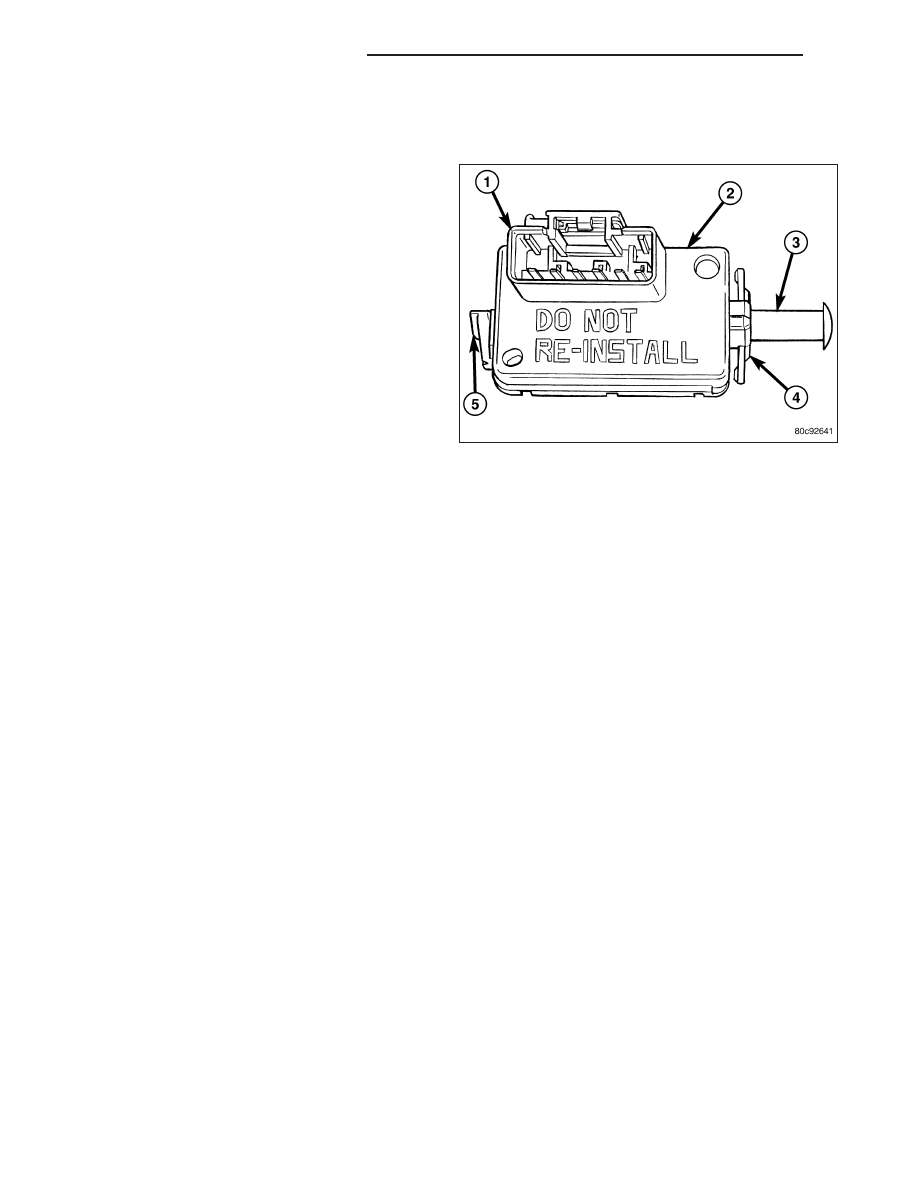Jeep Liberty KJ. Manual - part 97

BRAKE LAMP SWITCH
DESCRIPTION
The brake lamp switch (2) is a three circuit, spring-
loaded plunger actuated switch that is secured to the
steering column support bracket under the instrument
panel on the driver side of the vehicle. The molded
plastic switch housing has an integral connector
receptacle (1) containing six terminal pins and featur-
ing a Connector Position Assurance (CPA) lock. The
switch is connected to the vehicle electrical system
through a dedicated take out of the instrument panel
wire harness.
The switch plunger (3) extends through a mounting collar (4) on one end of the switch housing. The plunger has a
one time telescoping self-adjustment feature that is activated after the switch is installed by moving an adjustment
release lever (5) on the opposite end of the switch housing clockwise, until it locks into a position that is parallel to
the connector receptacle.
An installed brake lamp switch cannot be readjusted or repaired. If the switch is damaged, inoperative, or removed
from its mounting position for any reason, it must be replaced with a new unit.
OPERATION
The brake lamp switch controls three independent circuits. These circuits are described as follows:
•
Brake Lamp Switch Circuit - A normally open brake lamp switch circuit receives a battery voltage input, and
supplies this battery voltage to the brake lamps and the Controller Antilock Brake (CAB) on a brake lamp
switch output circuit only when the brake pedal is depressed (brake lamp switch plunger released).
•
Brake Lamp Switch Signal Circuit - A normally closed brake lamp switch signal circuit receives a direct path
to ground, and supplies this ground input to the Powertrain Control Module (PCM) on a brake lamp switch
sense circuit only when the brake pedal is released (brake lamp switch plunger is depressed).
•
Speed Control Circuit - A normally closed speed control circuit receives a battery voltage input from the Pow-
ertrain Control Module on a speed control supply circuit, and supplies this battery voltage to the speed control
servo solenoids (dump, vacuum, and vent) on a speed control brake switch output circuit only when the speed
control system is turned On and the brake pedal is released (brake lamp switch plunger is depressed).
The components of the self-adjusting brake switch plunger consist of a two-piece telescoping plunger, a split plunger
locking collar, and a release wedge. The release lever has a shaft with a wedge that spreads the plunger locking
collar to an open or released position. After the switch is installed and the brake pedal is released, the plunger
telescopes to the correct adjustment position. When the release lever is moved to the release position, the wedge
is disengaged from the locking collar causing the collar to apply a clamping pressure to the two plunger halves,
fixing the plunger length.
The brake lamp switch can be diagnosed using conventional diagnostic tools and methods.
8L - 46
LAMPS/LIGHTING - EXTERIOR
KJ